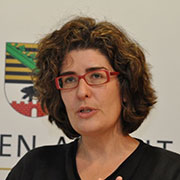Engaging with global coordination structures: Follow-up questions
On 31 May, the first session of PHAP’s and ICVA’s new learning stream on humanitarian coordination took place with over 200 participants. The event focused on the Inter-Agency Standing Committee (IASC) and its role in the global humanitarian coordination architecture.
The webinar featured presentations from three guest experts – Kirk Prichard from Concern U.S. and Building a Better Response, Kate Halff from the Steering Committee for Humanitarian Response (SCHR), and Leila Muriithia from the Refugee Consortium of Kenya (RCK). Their presentations were followed by a Q&A session in which also Belinda Holdsworth, Chief of IASC, discussed questions from the participants.
Many of the questions were answered live during the event (which you can listen to in the event recording), but as there were more than there was time for in the event, the guest experts have now answered the remaining questions, which you can find on this page.
“For coordination to be effective, we need organizations and people to accept to be coordinated, to share information and to be fully transparent. Do you think these three elements are present in the field to move forward?”
- Program Manager, INGO, Canada
 Kate Halff
Kate HalffI see two dimensions to your question: on what terms would organizations and people be prepared to coordinate? Is what is on offer meeting their terms? I think that the minimum coordination needed from the perspective of people affected by crisis is a common analysis of needs and priorities, and a division of labor based on added value of actors able to deliver assistance and protection. This requires good information sharing, joint work to develop an analysis and agree on broad priorities, complementarity of action, and transparency about actual capacities and results. As affected people are increasingly able to make their voice heard, effective coordination becomes an important measure of the success of humanitarian response. Nobody wants to be coordinated by, we have no choice but to coordinate with.
"If I would like to directly engage as a local or national in one of IASC Task Teams or Reference Groups, how should I proceed?"
- Program Officer, INGO, Netherlands
 Kate Halff
Kate HalffTo engage in an IASC Task Teams (currently TTs include: Accountability to Affected People and Protection from Sexual Exploitation and Violence; Humanitarian Financing; Strengthening the Humanitarian-Development Nexus with a focus on protracted contexts; Inclusion of Persons with Disabilities in Humanitarian Action) or an IASC Reference Groups (currently these include Risk, Early Warning and Preparedness; Principled Humanitarian Action; Protracted Displacements; Gender and Humanitarian Action; Meeting Humanitarian Challenges in Urban Areas; Mental Health and Psychosocial Support in Emergency Settings), send an email to the TTs or RGs coordinators (the IASC Secretariat can supply these) asking to be put on the TTs or RGs mailing list, and informing them that you want to join the group.
"I saw that the Refugee Consortium of Kenya (RCK) mentioned as a challenge when engaging with IASC the fact that they face resource constraints to attend meetings. How has RCK addressed this issue? Is the IASC addressing this somehow?"
- Community Development Officer, INGO, Cambodia

Leila Muriithia
Resources are a major challenge as donors are still unwilling to provide the same amount of funding for a local NGO. Also, since local NGOs are the first responders, then, donors prefer to provide funding that is directed to the community. In this regard, RCK is able to deal with this challenge through being a member of ICVA. RCK is able to share its input with ICVA staff, who in turn, attends the IASC meetings and share with us the meeting outcomes. I have attended these meeting twice, and I attended as an ICVA board member with the resource support coming from ICVA.
You can access the rest of the Q&A as well as further resources on the event page.